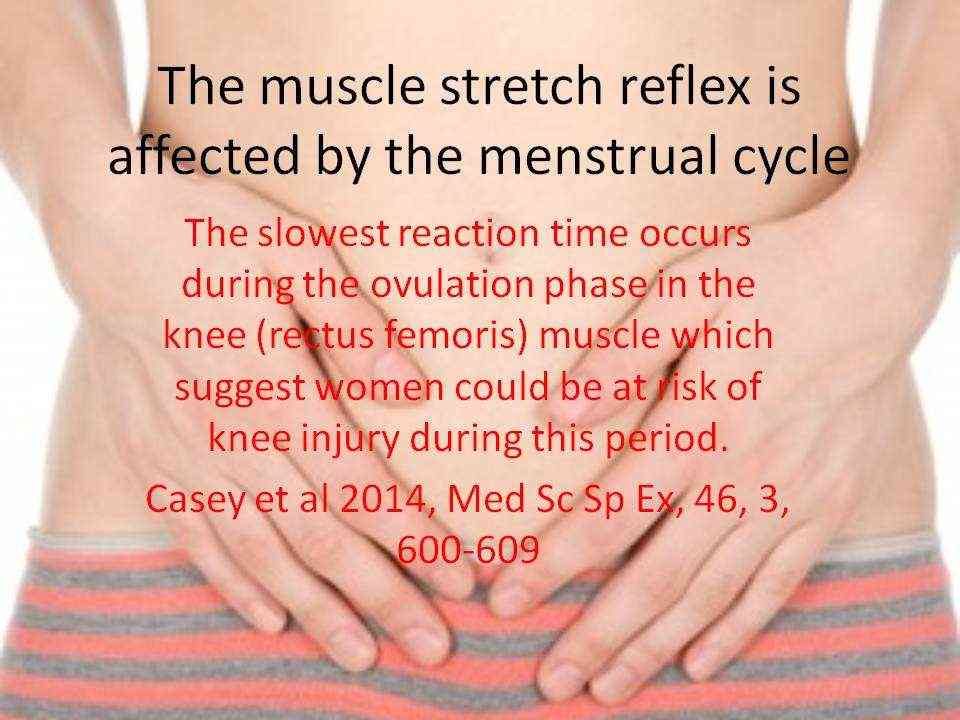Female Hormones and Knee Strength

Endurance exercise and mid luteal phase of the menstrual cycle
Investigators have found that aerobic athletic performance is compromised during the mid-luteal phase compared with the mid-follicular phase of the menstrual cycle (Freemas JA et al 2021 Med Sc Sp Ex, 53, 2, 442-452)
Muscle activation around the patella and the menstrual cycle
The initial firing rate is lower in the VMO (vastus medialis oblique) compared with VM (vastus medialis) in women not men. The firing rate is affected by the menstrual cycle, showing increases in initial firing during the early follicular phase through to the late luteal phase. The initial firing was lower in VMO compared to VM during ovulatory and midluteal phases (Tenan et al 2013, Ex Sc Sp Ex, 45, 11, 2151-2157). This could play a bearing on anterior knee pain due to an increased lateral gliding of the patella over the femur, leading to patellofemoral syndrome.
Anterior cruciate ligament (ACL) and the menstrual cycle
Women are 2-8 times more likely to rupture their ACL than men, suggesting a hormonal mechanism behind this observation (Konopka et al DOI:10.1177/0363546516646374). The ACL is designed to prevent forward shearing of the shin bone (tibia) on the thigh bone (femur). Anterior knee laxity (AKL) and hyperextension of the knees were shown to be significant predictors of anterior tibial translation (ATT) in both males and females. Interestingly the restraining structures to knee hyperextension are the posterior cruciate ligament (PCL) and popliteus muscle, suggesting that the knee in non weight bearing is in a relative posterior position and hence allows for greater total anterior excursion of the tibia. Notably, if a females ACL changes as much as 3mm across her menstrual cycle the ATT changes by 2mm which represented a change of approx 30% in mean magnitude of the ATT (Schultz et al 2011 Med Sc Sp Ex, 43, 2, 287-295). Furthermore, in another investigation, the same authors demonstrated increased absolute and relative magnitudes of multiplanar knee laxity changes. These were seen as increased valgus coupled with relatively greater external rotation of the tibia, making the knee more susceptible to injury on ground contact and early in the landing phase (Schultz et al 2012 Med Sc Sp Ex, 44, 5, 900-909)
Women on the contracetive pill and ACL injuries
Researchers looking at US insurance claims between 2007 and 2017 found that women on the pill were less likely to have an ACL injury whilst playing sport. Reconstructive knee surgery was performed on 569 out of 82874 women who were not on the pill versus 465 out of 82874. Thus the synthetic oestrogen and progesterone hormone were considered protective against knee injuries (De Froda et al 2019,The Physician and Sports Medicine, April)
ACL injuries in football
https://www.back-in-business-physiotherapy.com/sports-performance/knee-injuries-in-soccer.html
Uploaded : 5 May 2019
Updated : 24 July 2021




